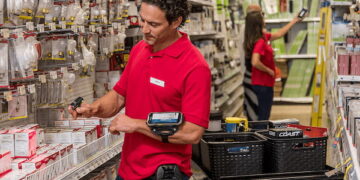Crédito: fuente
The only thing that actually felt normal this holiday season was a video chat with my family on Christmas day. I logged on to a Facebook video call from New York City while my mom and brother called in from California. Aunts, uncles, cousins, nieces, and nephews joined from more states across the US, the UK, Canada, Qatar, and the Philippines.
The platforms we’ve used to keep this tradition going have changed over the past few decades. Way before Zoom became the lifeline for staying connected during the pandemic, immigrant families like mine have had to rely on whatever technology was available to stay in touch. Finding ways to reach out over long distances is nothing new, it’s what we do in a diaspora.
This year, I found myself glued to the screen all Christmas morning marveling at how much taller my nieces, nephews, and god kids have gotten since the last time I saw them in person — which in most cases, has been years. I’ve mostly watched them grow up on screens.
Before there were apps like Skype, it was even harder for us to connect. My dad moved to California from Manila not long after I was born to set up a life for us in America. Before my mom and I joined him, the only way my dad could see our faces was in photographs that my mom sent him.
“Daddy, just want to show you my complete set of teeth… and my dimple…” my mom scrawled on the back of a photo of two and a half-year-old me. Another copy of that picture would end up in my very first passport.
Once the three of us, plus my American-born brother, were all stateside, there were expensive, hurried calls with relatives in the Philippines on our landline. Those calls triggered another frantic game of telephone. You needed to corral the household so that each person could have a moment on the call. “Hurry, tell so-and-so to pick up the phone,” whoever was holding the receiver yelled out. “It’s long distance!”
Skype was a game-changer when it started offering free video calling in 2006. I remember logging on from the desktop computer in my parents’ bedroom when I was visiting home from college. There, I’d see my grandma in the Philippines squinting to make out our faces in the blurry webcam picture. Before then, just hearing her voice was an expensive luxury. Suddenly, it was free — and I could look her in the eye while we chatted for as long as we wanted. By 2009, I had my own Skype account separate from my parents, and it seemed like all my cousins, aunts, and uncles did, too.
Now, I have an entire folder of apps on my phone that my family uses for free, long distance calls. There are so many platforms to choose from that each of our calls tends to start with the question of whether we’re using the right app: will switching over to Viber or Facebook offer a better signal or be easier for elders on the call to use?
Those calls have seamlessly melded into in-person events, too. My mom’s side of the family has held a reunion on New Year’s Day every year since before my mom was born. We’re a big family (my mom alone has eight siblings), so this is a big production. My mom rarely gets to attend in person, but she calls in every year. The last time I attended the reunion, in the Philippines in 2014, my mom was still in California. I called her from my laptop and set her up on a table with a good view of the party. Other relatives abroad made their rounds on cellphones passed around by guests.
For the first time in more than 60 years, the reunion didn’t take place in person this year. I still found comfort in talking with my family over another video chat on New Year’s Day, but it doesn’t make me miss them any less. The heartache is still there when the holidays are over. It will be there when the pandemic ends. Going home isn’t always as easy as taking a plane ride when you’re an immigrant. There’s lots of red tape and luck involved when it comes to crossing borders. And there still isn’t an app that will let me reach out and kiss my mom on the cheek, or pick up my nieces and nephews before they get too old for me to do that.
For me, sacrificing physical togetherness for the promise of more security in the future was part of growing up. And while technology can’t fully bridge the distance between family members, it has made that separation easier to bear.
Video calls are now a standard way to connect with other family members who’ve fanned out around the world in search of a future with bigger possibilities. A staple of our family calls is help with finding work abroad and making a home for yourself in a new place. I’ve often heard it said that the Philippines’ biggest export is its own people. Its economy relies on over 2 million overseas workers, including a lot in health care, whose remittances make up about a tenth of the country’s GDP. The small archipelago nation is the world’s leading supplier of nurses — including my mom, lots of other relatives, and the nurse in the UK who administered the world’s very first authorized vaccine against COVID-19.
Searching for opportunities far from home, however, has come with costs. We’re perpetually missing our loved ones. There’s a shortage of health care workers in the Philippines, and a disproportionately high number of Filipino Americans working on the frontlines of the pandemic have died from COVID-19.
A lot of people around the world sacrificed time with family and turned to virtual celebrations this holiday season to stop the spread of COVID-19. For that, I’m thankful, because it keeps my mom and other family members who work in health care safer. There are other immigrant essential workers who are more exposed to the virus and who have for years held up industries that take care of the sick and elderly and that bring food to our tables — perhaps at the expense of being with their family and friends during the holidays. A video call will never be as fulfilling as sitting in the same room with the people we love. But it’s more than what some of us have had in the past or have access to even now.
The photos my mom sent my dad of me while we were still living in the Philippines are now neatly bound in a photo album. They’re a reminder that resourcefulness in immigrant communities has been about more than finding ways to get ahead. We’ve found ways to stay connected.








